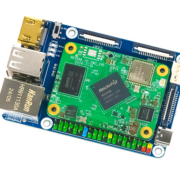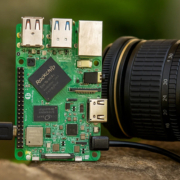What is the Most Popular Development Board?
In the world of electronics, IoT, robotics, and embedded systems, development boards are the essential tools that bring ideas to life. Whether you’re a hobbyist prototyping a smart home gadget or a company building a commercial embedded device, choosing the right development board can make or break your project.
But with so many options out there, one question remains: What is the most popular development board today?
Top Contender: Raspberry Pi
Among all the development boards available, Raspberry Pi remains the most popular and widely adopted by developers, educators, and businesses.
📌 Why Raspberry Pi?
- Affordable and accessible for beginners and professionals
- Supports full Linux OS (usually Raspberry Pi OS based on Debian)
- Strong community and ecosystem
- Multiple interfaces: GPIO, HDMI, USB, Ethernet, Camera/Display ports
- Great for learning, prototyping, and even commercial deployment
Popular Models:
- Raspberry Pi 4 Model B (1GB/2GB/4GB/8GB RAM options)
- Raspberry Pi 3 Model B+
- Raspberry Pi Zero 2 W (compact and cost-effective)
Use Cases:
- DIY smart home systems
- AI and machine learning on the edge
- Media centers
- Industrial automation
- Educational platforms
Other Popular Development Boards
While Raspberry Pi leads the way, other powerful development boards are also widely used depending on the application:
1. Arduino (Uno, Mega, Nano)
- Best for: Beginners, students, hardware control
- Strength: Simple C/C++ programming for sensor and actuator control
- Limitation: No full OS; limited computing power
2. ESP32 (by Espressif)
- Best for: IoT and wireless applications
- Strengths: Built-in Wi-Fi + Bluetooth, low power, dual-core
- Programming: Arduino IDE, MicroPython, ESP-IDF
3. BeagleBone Black
- Best for: Industrial use, real-time processing
- OS Support: Linux (Debian-based), strong GPIO performance
4. NVIDIA Jetson Nano
- Best for: AI and machine learning projects
- Strengths: GPU-powered, supports TensorFlow, PyTorch, ROS
- Use Case: Vision systems, robotics, autonomous devices
5. Portworld RK3566/RK3568 Boards
- Best for: Commercial embedded system development
- Features: Powerful ARM Cortex-A55 SoC, supports Android/Linux, PoE, Wi-Fi, RS485, and more
- Use Case: Smart home panels, POS terminals, digital signage, access control
- Advantages: Customizable for OEM/ODM projects with full software BSP support
📌 Example: Portworld P6802 (RK3568-based board) and YC-P6602 (RK3566 board) are popular among businesses needing high-performance, customizable Android/Linux solutions.
How to Choose the Right Development Board
Choosing the “most popular” board doesn’t always mean it’s the best for your needs. Ask yourself:
| Question | Why It Matters |
|---|---|
| What OS do I need? | Linux, Android, RTOS, or none (bare-metal)? |
| Do I need wireless features? | Boards like ESP32 or Raspberry Pi have built-in Wi-Fi/Bluetooth |
| Will this go into a commercial product? | Then OEM/ODM support, stability, and long-term supply are crucial |
| Do I need advanced processing (AI/ML)? | Look into NVIDIA Jetson, RK3588, or NPU-enabled SoCs |
| Do I plan to scale production? | Consider SKD/CKD-friendly boards from commercial suppliers |
The Raspberry Pi stands as the most popular development board in the world due to its affordability, power, and extensive community support. However, depending on your application—whether it’s IoT, industrial automation, AI, or smart home control—you may find other boards like the ESP32, NVIDIA Jetson Nano, or Portworld’s RK3566/RK3568 development boards better suited for your goals.
For businesses looking for a reliable, scalable, and customizable embedded solution, Portworld’s OEM/ODM-ready development platforms offer a compelling balance of performance, flexibility, and professional engineering support.





